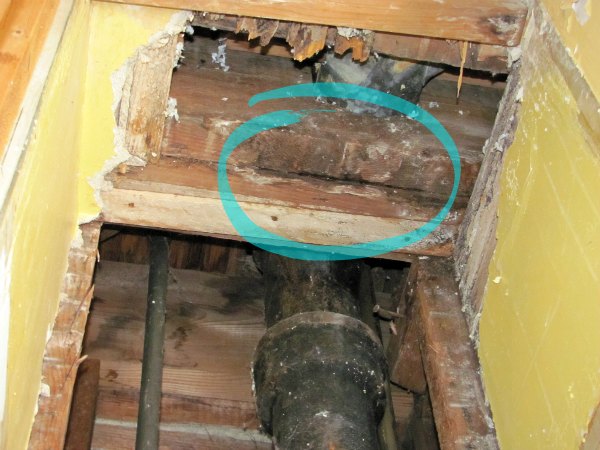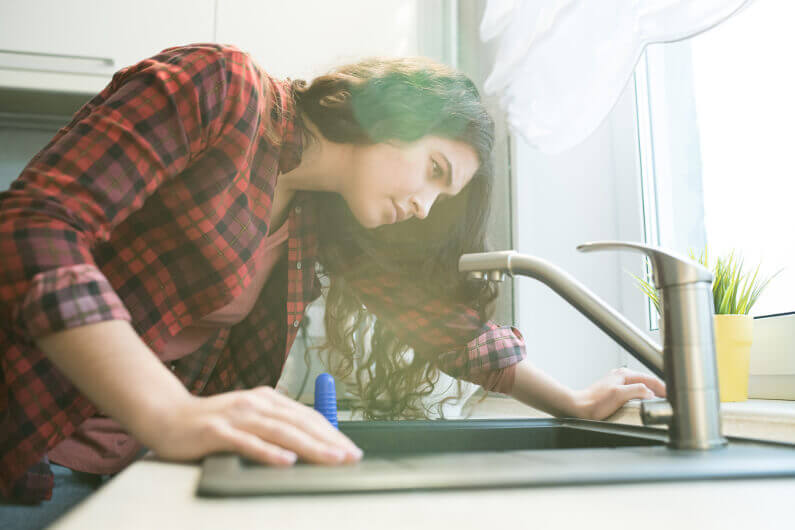Just how do you feel with regards to Common Plumbing Problems in Older Homes?

Older homes usually include charm, personality, and history, yet they can also bring a host of pipes problems. Whether you're handling aging pipelines, low water stress, or leakages, recognizing exactly how to deal with these common issues is important to maintaining a risk-free and functional home. In this overview, we'll explore the regular plumbing obstacles encountered by older homes and give functional solutions to maintain your plumbing in leading shape.
Recognizing Usual Pipes Concerns
Aging Pipes
Among one of the most typical concerns in older homes is aging pipes. Relying on the age in which your home was developed, the pipes could be made from materials that have degraded in time, such as galvanized steel, cast iron, or perhaps lead. These products can rust, end up being breakable, or develop leakages, resulting in water damages and potential carcinogen.
Low Water Pressure
If you're experiencing low tide pressure, maybe because of mineral deposits, corrosion inside the pipes, or old fixtures that are no more working efficiently. This can be a major inconvenience, specifically in locations like showers and sinks.
Dripping Pipelines
Leakages are an additional constant concern in older homes, commonly triggered by corroded or damaged pipes. Also tiny leaks can result in significant water damages, mold and mildew development, and increased water bills if not attended to immediately.
Out-of-date Fixtures
Obsolete pipes components such as taps, bathrooms, and showerheads not only look old however might likewise be less effective, susceptible to leaks, or inappropriate with modern-day pipes criteria.
Pipe Rust
Rust is an usual problem in older pipelines, specifically those made from galvanized steel or cast iron. Rusty pipelines can limit water flow, cause staining, and eventually result in leakages or pipeline bursts.
Analyzing the Condition of Your Pipes
Examining Visible Pipes
Start by inspecting any visible pipes in your home, such as those in cellars, crawl spaces, or under sinks. Search for indications of deterioration, leakages, or rust, which can show underlying issues.
Looking for Leaks
Look for leakages by checking locations around faucets, bathrooms, and under sinks. You can additionally check your water meter prior to and after a period of no water use to discover covert leaks.
Water High Quality Testing
Older pipes can influence the top quality of your water. Conduct a water high quality test to check for pollutants such as lead, corrosion, or various other impurities that may be presented by maturing pipes.
Solutions for Common Pipes Problems
Replacing Aging Pipelines
If your home has old, degrading pipes, think about changing them with modern materials like copper or PEX. This can be a significant investment, however it will certainly protect against future issues and boost the safety and reliability of your pipes system.
Fixing Low Tide Pressure
To take care of low tide stress, begin by cleaning or replacing old fixtures and eliminating mineral build-up in the pipelines. If the problem persists, it may be needed to replace areas of corroded pipes.
Repairing and Replacing Leaking Pipelines
For small leakages, you can use pipeline clamps or epoxy putty as a temporary repair. However, it's finest to change leaking pipelines entirely to prevent more damage.
Upgrading Components
Upgrading old fixtures to modern-day, water-efficient models can improve your home's pipes efficiency and decrease water usage. Look for fixtures with the WaterSense tag for the very best performance.
Taking Care Of Pipeline Corrosion
If your pipelines are worn away, replacing them with corrosion-resistant materials like copper, PVC, or PEX is the very best solution. Regular assessments and water quality maintenance can assist protect against additionally corrosion.
When to Call a Professional
While some pipes concerns can be taken care of with DIY services, there are times when it's best to employ a specialist. If you're handling major leakages, considerable corrosion, or are unsure regarding the problem of your pipelines, a qualified plumbing technician can give expert assessment and repair service.
Preventive Maintenance Tips
Normal Examinations
Consistently inspect your plumbing system for indicators of deterioration. Catching concerns early can prevent pricey fixings down the line.
Water Pressure Policy
Ensure your water pressure is within the advised array to prevent worrying your pipelines and components. A plumbing can install a pressure regulator if needed.
Water High Quality Maintenance
Install water filters or softeners if your water quality is poor. This can protect your pipes and fixtures from damages triggered by difficult water or pollutants.
Positive Pipe Replacement
If your home has very old pipes, think about aggressive replacement before major issues develop. This can save you from emergency repairs and water damage.
Conclusion
Handling plumbing issues in older homes requires a combination of vigilance, preventive upkeep, and prompt upgrades. By understanding the common obstacles and recognizing when to look for professional aid, you can guarantee your plumbing system remains functional and reputable for years ahead.
Common Plumbing Issues in Older Homes and How to Fix Them
Owning an older home in Australia comes with its unique charm and a set of challenges, especially when it comes to plumbing. The Sunshine Coast has many older properties that can harbour plumbing problems that aren t just inconvenient but potentially costly. Here s a look at some common plumbing issues in older homes and expert advice on how to handle them.
Outdated Piping Materials
Many older homes were built with galvanised steel, cast iron, or even lead pipes, materials that are far from ideal by today s standards. Galvanised pipes are prone to corrosion and clogging, while lead pipes pose serious health risks.
How to Fix:
Replacing old pipes is a job for a professional. Upgrading to copper or PVC piping not only enhances water quality and flow but also increases the property s safety and value. If you suspect your home has outdated materials, a licensed plumber can conduct a thorough inspection and recommend the best course of action.
Corrosion and Pipe Degradation
Over time, exposure to water and minerals can cause pipes to corrode, leading to leaks, bursts, and water contamination. Corrosion is especially common in homes over 50 years old.
How to Fix:
Regular inspections can catch early signs of corrosion. If corrosion is found, the affected section of piping often needs to be replaced. For homes with extensive corrosion, a complete plumbing overhaul might be necessary. It s crucial to consult with a plumbing expert to understand the extent of the issue.
Tree Root Intrusion
Older neighbourhoods usually have mature trees whose roots can intrude into pipe lines, causing blockages or damage. This is particularly problematic for sewer lines, where roots seek out water sources.
How to Fix:
A plumber can use a specialised camera to inspect sewer lines for root intrusion. If roots are a problem, methods like root cutting or hydro-jetting can clear the obstruction. In severe cases, part of the pipe may need replacing. Consider root barriers around the piping to prevent future issues.
Inadequate Water Pressure
Low water pressure in older homes can be due to various factors, including corroded water lines, sediment build-up in pipes, or outdated fixtures.
How to Fix:
First, check if the low pressure is isolated to one area or throughout the house. Replacing old fixtures can sometimes resolve the issue. However, if the problem is more widespread, it might be due to sediment or corrosion. Flushing the system or replacing the affected pipes usually restores normal pressure. Again, a professional assessment is advisable.
Outdated Fixtures
Older homes often feature fixtures that are not only visually dated but functionally inefficient. This includes everything from toilets and taps to showerheads and washing machine hoses.
How to Fix:
Updating these fixtures can improve both water efficiency and the aesthetic appeal of your home. Modern fixtures are designed to conserve water, which can significantly reduce your water bill and lessen your environmental impact.
Conclusion
Maintaining the plumbing in an older home requires a proactive approach. Regular checks and updates are key to preserving these beautiful properties. If you re facing plumbing issues in your older home, it s best to call on experienced professionals like Green & Gold Plumbing & Gas. With the right expertise, even the most daunting plumbing problems can be resolved, ensuring that your home s character is maintained while its functionality is enhanced.
https://gandgplumbing.com.au/common-plumbing-issues-in-older-homes-and-how-to-fix-them/

Do you enjoy reading about Common Plumbing Challenges In Old Buildings? Post feedback down the page. We would be delighted to know your reactions about this article. In hopes that you visit us again in the near future. For those who appreciated our article if you please do not forget to pass it around. Thanks a lot for your time. Revisit us soon.
Call Today